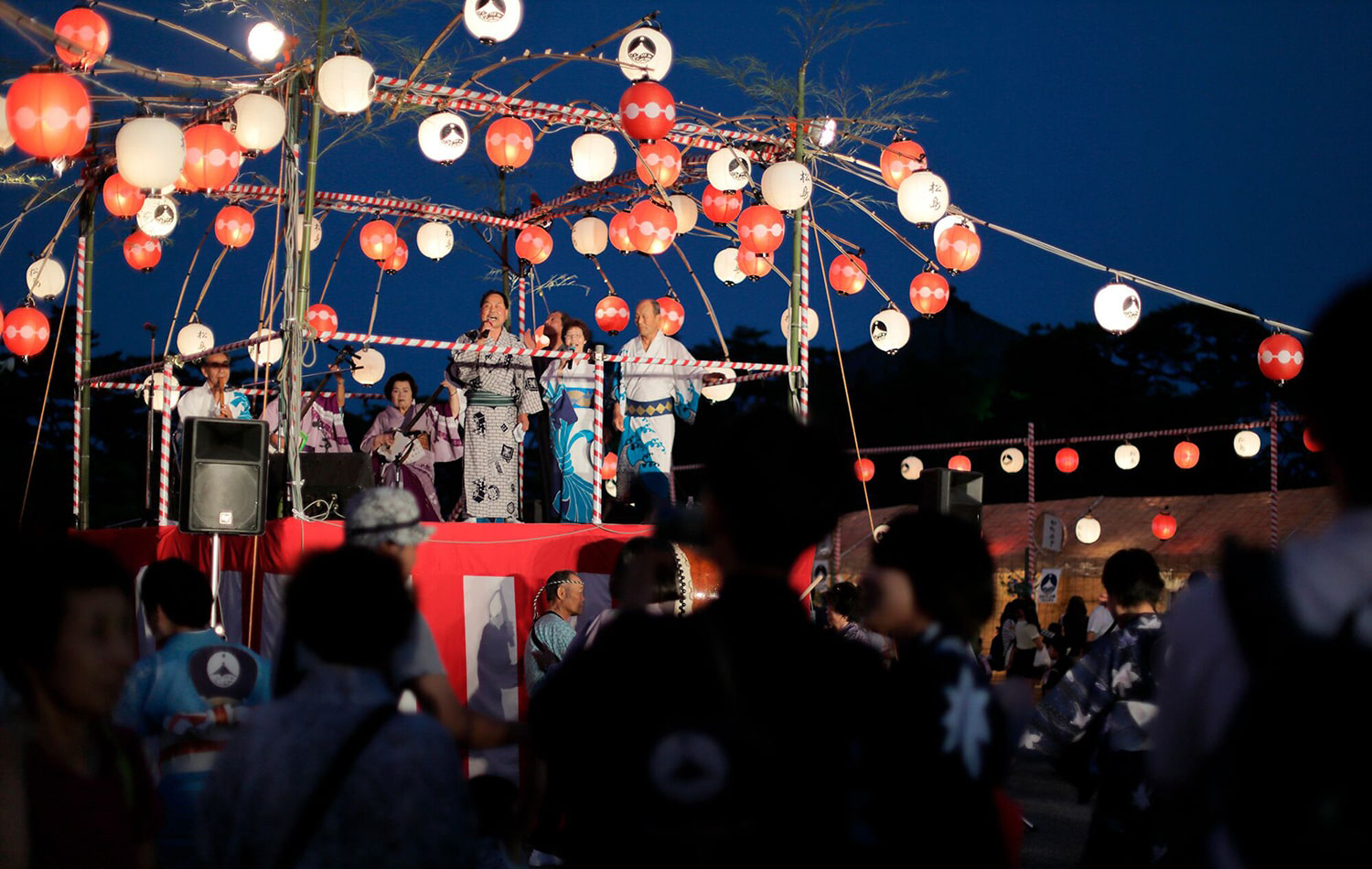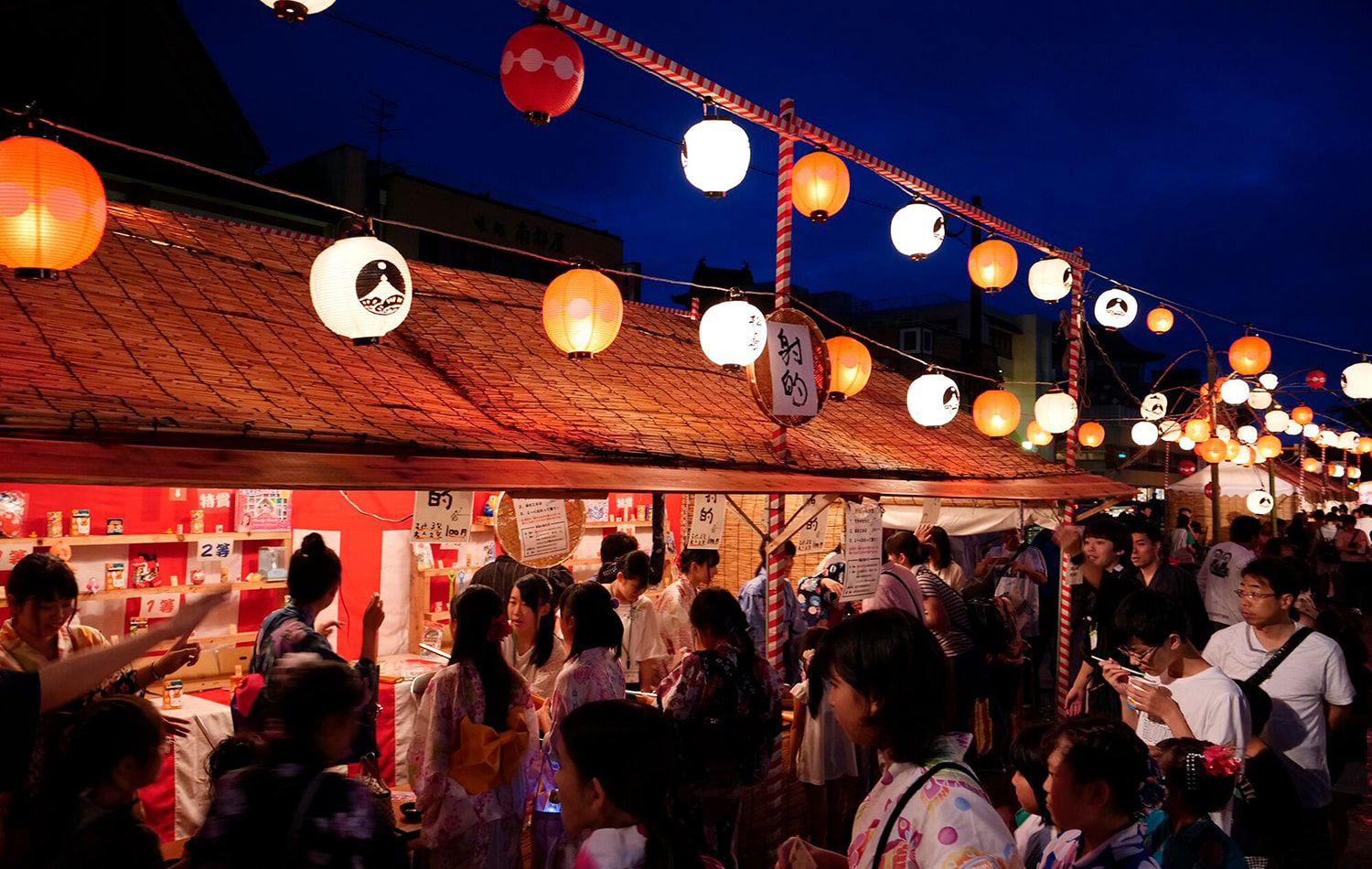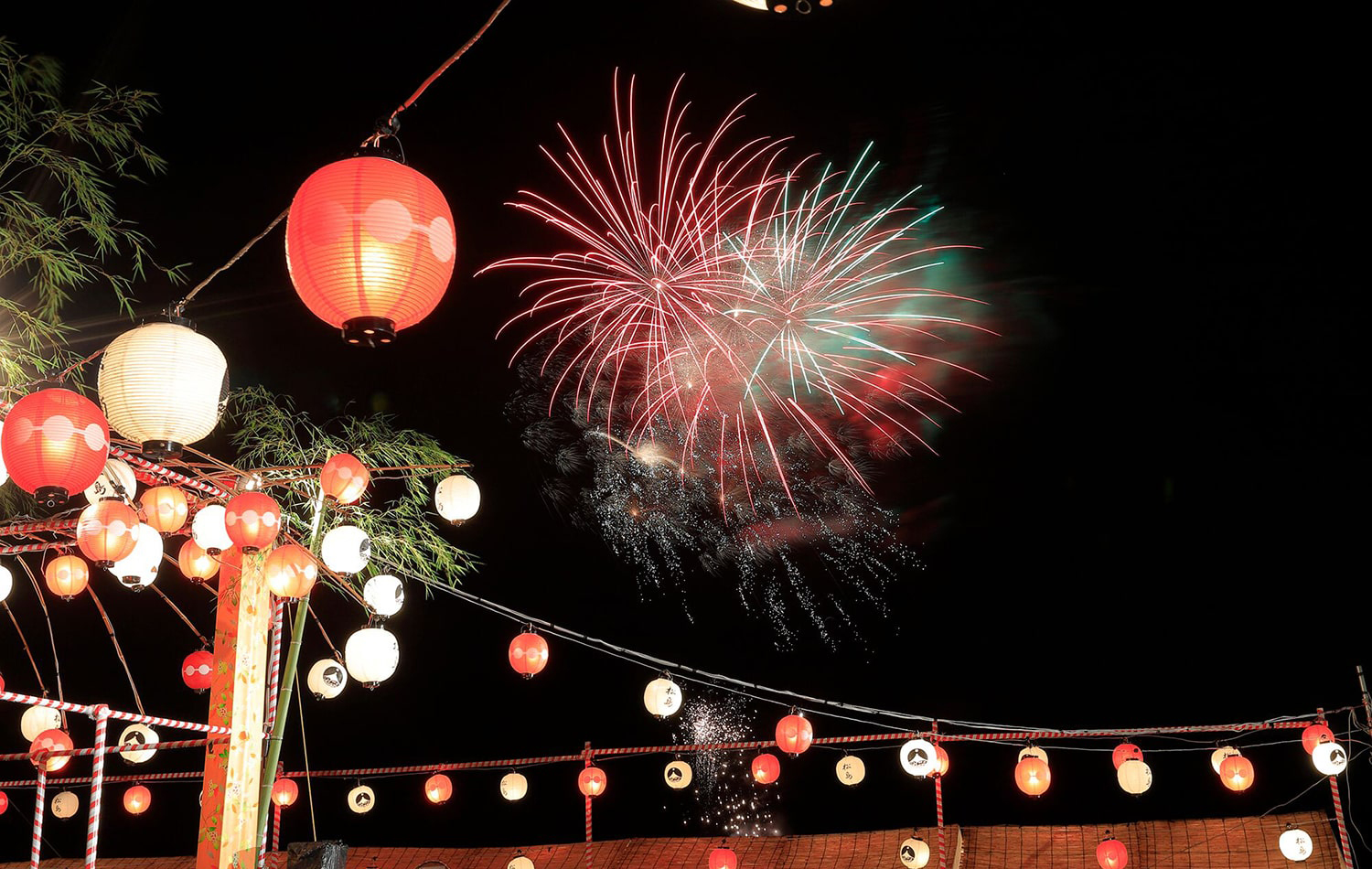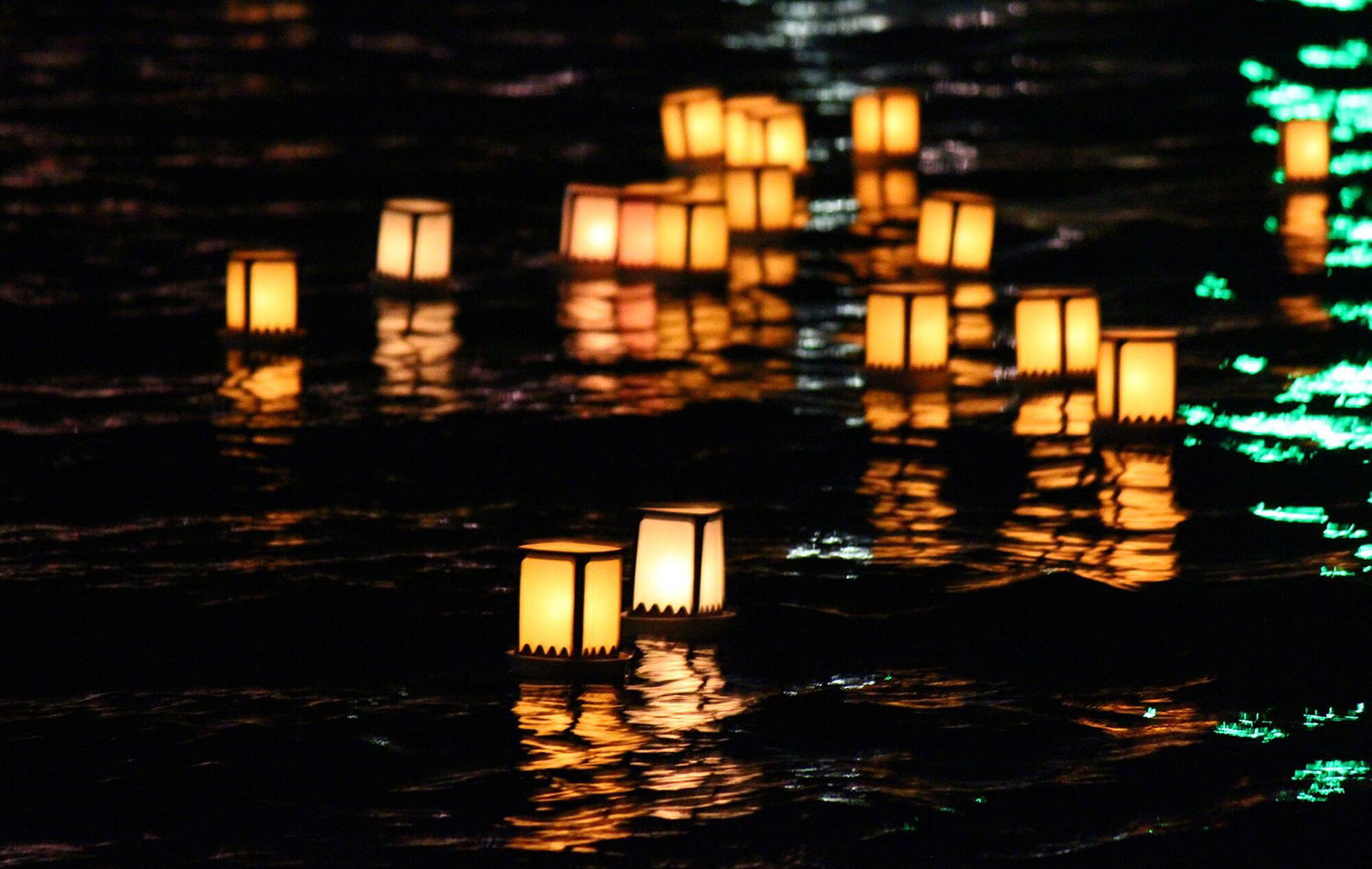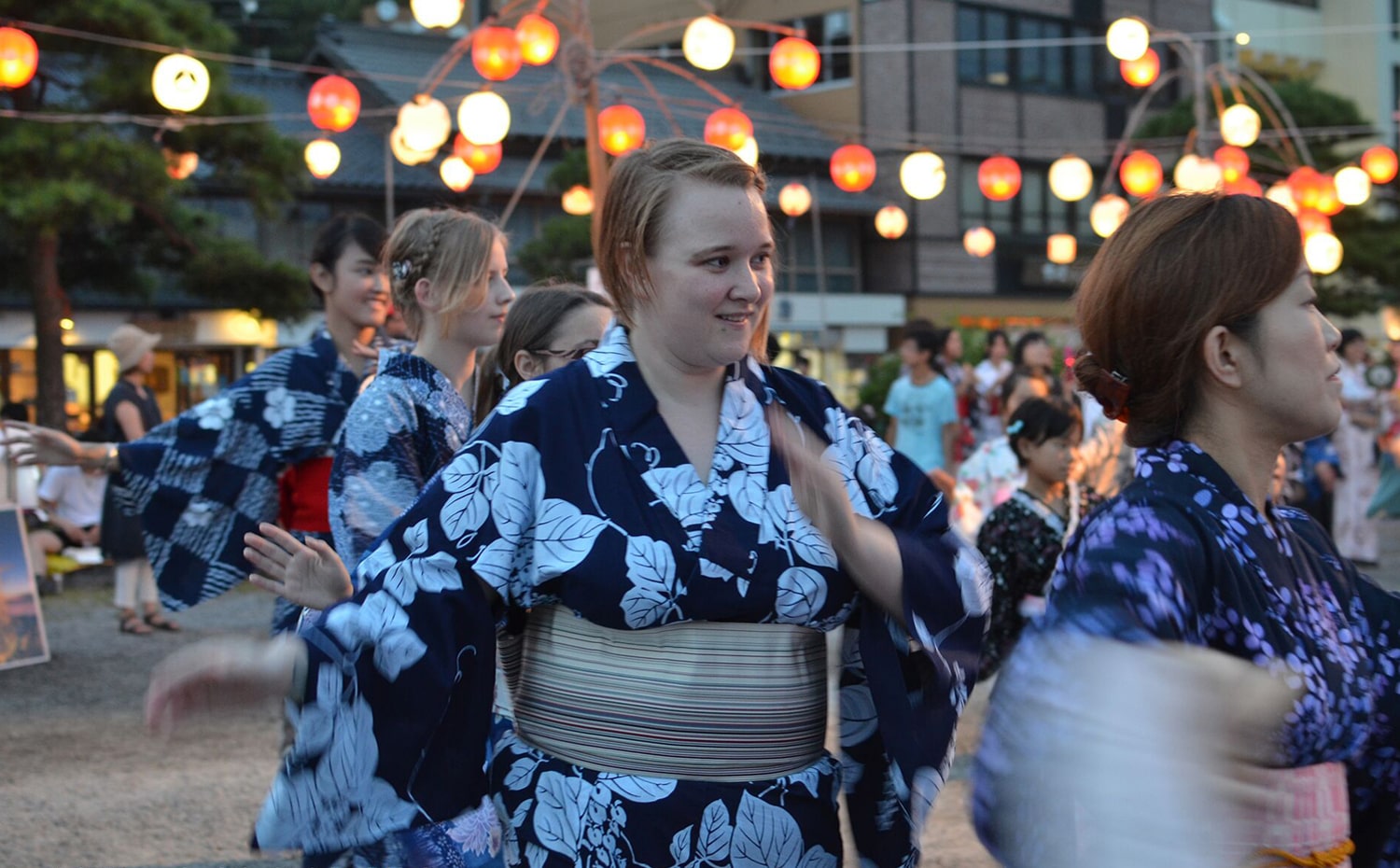
Bon Odori
OVERVIEW
For more than a thousand years, Matsushima has been regarded as a sacred place where Buddhist monks came to perform their ascetic training. From the Edo period onward, it has also welcomed pilgrims in its role as Zuiganji’s temple town. The Umi No Bon Festival was started to treasure this quintessentially Japanese culture. Handmade stalls line the venue while people in yukata perform the Bon dance under red lanterns. Floating lanterns are set adrift on the sea as a memorial to our ancestors. This is a festival where local people, children, and adults can come together and experience good old Japan.
DETAIL
ADDRESS Chonai 98-1, Matsushima, Matsushima-machi, Miyagi-ken(at the Matsushima Tourist Association)
OPEN Please check the website.
PHONE 022-354-2618
PARKING Please use the paid parking lots nearby.
PERIOD August 15 and 16 every year

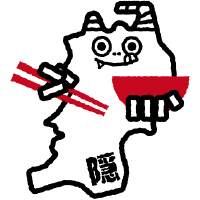
Reccommend
Local Tours
Using local guides, we provide many tours that let you discover and experience
the wonders of Japan lying hidden in the “everyday” of the nearby area.
TOUR.01
Oyster Paradise Matsushima|Immerse yourself in the culture and flavours of Japan's most scenic bay!
TOUR.02
Kimono Walking Tour of Matsushima|Become part of the scenic beauty at one of Japan's top views!
TOUR.03
‘Sea & Sakura’ Hike in Matsushima|Soak up the sun, sea and sakura with hidden views of Matsushima Bay.

MATSUSHIMA town
Together with Amanohashidate in Kyoto and Miyajima in Hiroshima, Matsushima is one of Japan’s Three Most Scenic Spots. With many cultural heritage sites such as Zuiganji Temple and Godaido Temple, Matsushima was once visited as a sacred ground, and, since the Edo period, it has enchanted its visitors with its picturesque scenery: the more than 260 islands, large and small, that float in Matsushima Bay and the changing nature of the four seasons. The area is also blessed with plentiful seafood, and it has been well known since long ago for its prosperous oyster cultivation.

Key Person

A new generation starts to take part in the town’s tourism!
Asano Shoten/Shingo Asano
Matsushima is known for being one of Japan’s Three Most Scenic Spots. You can enjoy the Matsushima Island Cruises—which take 50 minutes to tour the 260 islands, large and small, that make up the famous Matsushima Bay—and a pilgrimage around famous temples with a connection to the Date clan—such as Godaido, Zuiganji, and Entsuin. Every year, during the autumn, Entsuin holds viewings of the autumn leaves that are illuminated by lights and sake-tasting events, such as the Horoyoi Shinshu Matsuri (Tipsy New Sake Festival). Since the disaster in 2011, many people in their 30s and 40s, who trained in urban areas such as Tokyo, have returned to the town, and they are now making waves in many types of businesses—including restaurants, souvenir shops, and accommodation facilities. Enjoy a walk around the town with one of the sticky rice balls that my store, Asano Shoten, sells during the weekends.
Specialty Products
In terms of specialty products, Matsushima oysters are first and foremost. You can of course eat the fine-grained and firm flesh of Matsushima oysters raw, but you can enjoy them in many other ways, such as in oyster hotpot or as steamed oysters. Additionally, Miyagi prefecture has so many wooden kokeshi dolls that it is known as the kokeshi kingdom, and Matsushima even has Matsushima Naohide Kokeshi dolls. You can have fun trying to paint your own.
Natural Environment
The beautiful scene of the many islands that float in Matsushima Bay has been worshipped since ancient times as Amitabha’s pure land and Oshima Island have woven the bay’s history as a sacred place. It is said that oyster cultivation began in Matsushima Bay 300 years ago, and the region has blessed its inhabitants with abundance. The nature of Matsushima is intertwined with the history and culture of the town and the lives of its people.
Historical Person
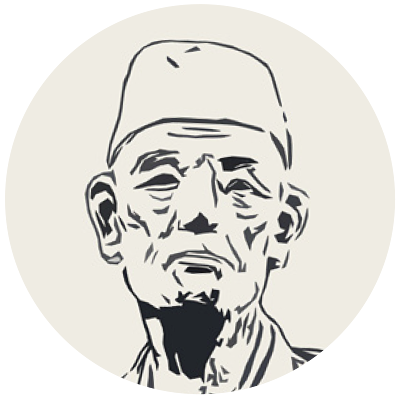
Basho Matsuo
1644 - 1694
Matsuo Basho was a master of haikai poetry. He established his own form of haiku poems with tones of wabi-sabi, and he left travel writings such as Oku no Hosomichi (The Narrow Road to the Deep North) in addition to many verses.
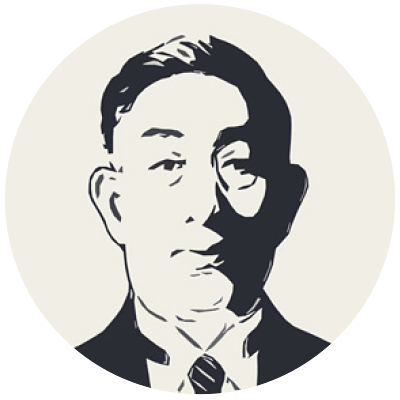
Nagayoshi Aoki
1879 - 1935
Aoki Nagayoshi was a lyricist. He held positions as a professor at the Tokyo Academy of Music and an editor in chief for the Ministry of Education’s book publications. He wrote the lyrics to the Ministry of Education song “Donguri korokoro” (“Rolling Acorns”), which is widely known in Japan.
Area Access

From Sendai Station
40min
【TRAIN】 From Sendai Station approx. 40 minutes to Matsushima-Kaigan Station on the JR Senseki Line

From Sendai Airport
60min
【BUS】 From Sendai Airport approx. 60 minutes to Matsushima-Kaigan Station on the Iwate Prefecture North Bus








